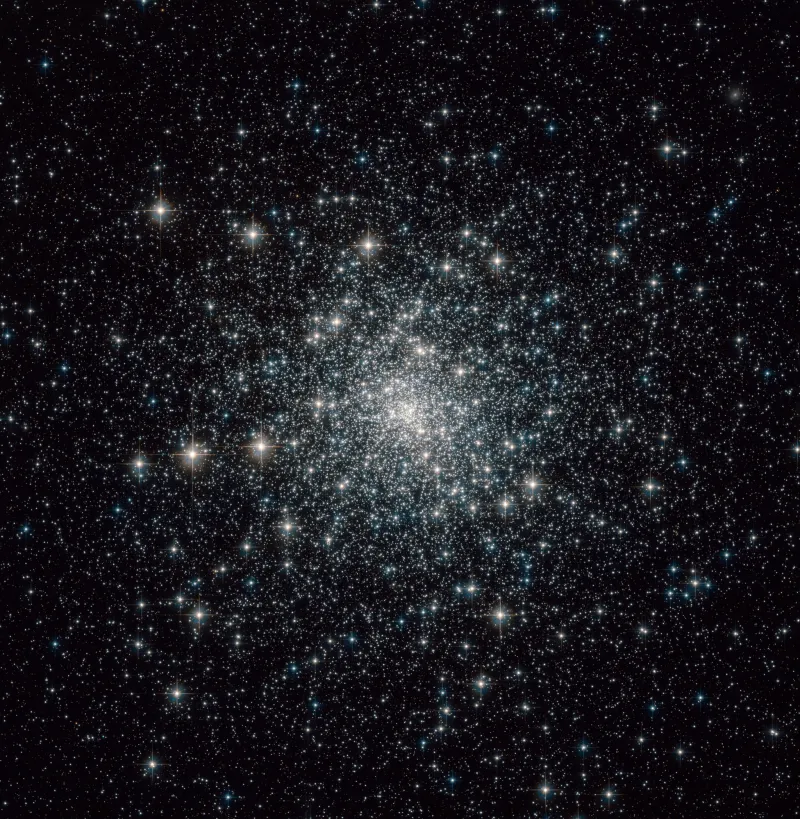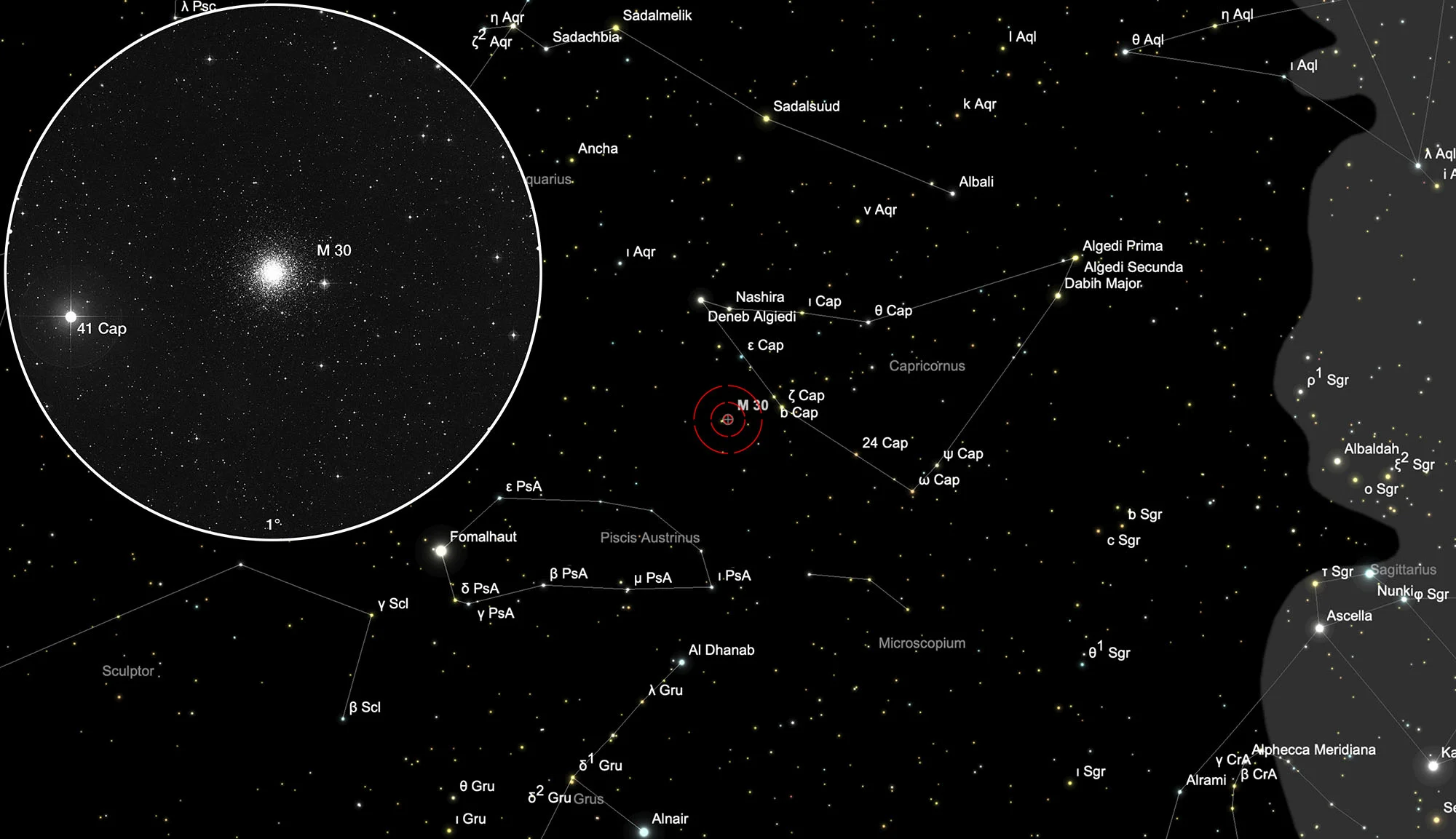Globular Cluster Messier 30

History
The globular cluster M 30 was discovered by Charles Messier in August 1764. He described it as «a nebula ... difficult to see in an ordinary 3.5-foot telescope ... It's round and I didn't see a star here, observed with a good Gregorian telescope at 104x.» It was probably William Herschel who was able to resolve the globular cluster into single stars for the first time in 1783. He described it as follows: «Brilliant ... with two rows of stars, 4 or 5 in a line, which probably belong to them.» [4] These two rows of stars can be seen nicely on the photo from the Hubble Space Telescope in Fig. 1.
Physical Properties
On Simbad one finds a distance measurement of 7000 pc (22'800 light years) and a radial speed of 185 km/s in our direction. The cluster consists of several hundred thousand stars and measures about 90 light years in diameter. [145, 262]

Stars in globular clusters are usually very old, around 12-13 billion years. However, some stars in a globular cluster are much younger than the average and seem to have been left behind by the other stars, which followed the course of stellar evolution and became red giants, so-called «blue stragglers». Such stars have been known since the 1950s, but the history of their formation remained unclear for a long time.
Francesco Ferraro from the University of Bologna published a study in 2009 [263] in which 44 high-resolution photos were examined with the Hubble space telescope. According to this study, the «blue stragglers» came about through star collisions or through a process sometimes called «vampirism». The newly formed stars are heavier than the others and are concentrated in the centre of the globular cluster.
It is believed that M 30 went through a major «star collapse» a billion or two years ago, in which stars were thrown towards the centre, which led to a rapid increase in star density. On the one hand, this led to an increase in star collisions and, on the other hand, favoured the formation of binary systems in which one star practically sucked the other away. [262]
| Designation | NGC 7099 |
| Type | GCL (V) |
| Right Ascension (J2000.0) | 21h 40m 22.0s |
| Declination (J2000.0) | -23° 10' 43" |
| Diameter | 12 arcmin |
| Visual magnitude | 6.9 mag |
| Metric Distance | 8.100 kpc |
| Dreyer Description | !, globular, B, L, lE, gpmbM, st 12…16 |
| Identification, Remarks | h 2128=3878; GC 4687; M 30; GCL 122; ESO 531-SC21 |
Finder Chart
The globular cluster M 30 is located in the constellation Capricornus, only 23 arc minutes from the 5.2 mag bright star 41 Capricorni. The best observation time is April to January. Then the constellation is highest above the southern horizon at night.
Visual Observation
762 mm Aperture: The two star chains extending far outward are particularly noticeable in the globular cluster M 30. — 30" f/3.3 SlipStream Dobsonian, Hasliberg, 9. 8. 2024, SQM 21.33, Eduard von Bergen
